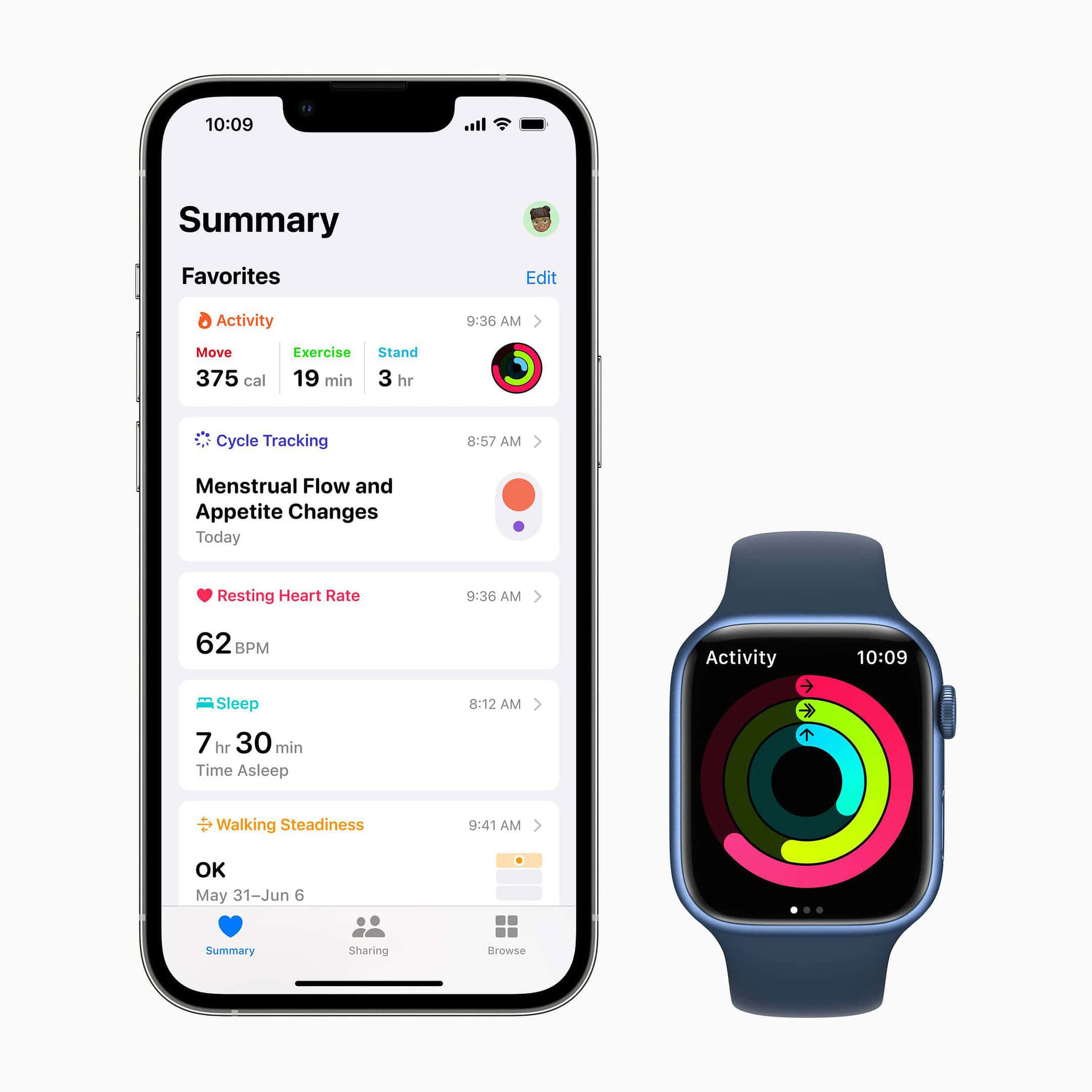Your iPhone can track your daily physical activity using its built-in step tracking feature. The device has a motion and orientation sensor called an accelerometer, which counts your steps by recognizing patterns in your movement as you walk. You can view your step count and other health and fitness data in one place using the Apple Health app, which comes standard on all iPhones. By keeping your iPhone with you throughout the day, it can accurately track the steps you take and the distances you travel without needing extra devices like smartwatches or fitness bands.
Knowing how to use your iPhone’s step tracking can help you set and achieve personal fitness goals. The Health app not only displays your current step count but also allows you to view your step history, so you can assess your progress over time. Additionally, this feature works with other health-related apps and devices, giving you a better overall picture of your health and physical activity. For those who want to increase their daily steps, the iPhone makes tracking easy and streamlined, helping you maintain a more active and health-conscious lifestyle.

Track Your Fitness Goals with Your iPhone
Yes, your iPhone can automatically track your steps! It has built-in tools specifically for this purpose. Here’s how to access your step data and make the most of this feature:
👣 Using the Health App
Your iPhone’s Health app is where all your step information is stored. To use it:
- Open the Health app. It comes pre-installed on your iPhone.
- Tap the “Summary” tab. Here, you’ll see your daily activity data.
- Look for the “Steps” section. This displays your total steps for the current day.
- Tap “Steps” for more details. See your step history, trends, and walking distances.
⚙️ Adjusting Settings
You can customize how your iPhone tracks your steps:
- Go to Settings.
- Tap “Privacy” then “Motion & Fitness.”
- Make sure “Fitness Tracking” is switched on.
⌚️ Pairing with an Apple Watch
If you have an Apple Watch, it will automatically sync your step data to your iPhone’s Health app. This may provide even more accurate tracking.
📱 Third-Party Apps
There are alternative fitness tracking apps on the App Store. These often have extra features like:
- Challenges and competitions
- Detailed workout stats
- Social connection with friends
🌟 Benefits of Step Tracking
Tracking your steps can be motivating and help you:
- Increase your daily activity.
- Meet fitness goals.
- Monitor your health over time.
Here’s where to find these settings on your iPhone:
- The Health App: https://support.apple.com/en-us/104997
- Settings > Privacy > Motion & Fitness
- App Store: Search for fitness tracking apps
Is Your iPhone Step Tracker Reliable?
The iPhone’s built-in step tracker is a handy tool for monitoring your activity levels. But, it’s important to understand how accurate it actually is.
🤔 How the iPhone Step Tracker Works
Your iPhone uses a combination of sensors to track your steps. This includes:
- Accelerometer: Detects changes in movement and speed.
- Gyroscope: Helps determine the orientation of your phone.
- Barometer: Measures changes in altitude (like when climbing stairs).
Your iPhone’s software analyzes data from these sensors to estimate your steps.
🔎 Research Insights on Accuracy
Several studies have looked into the iPhone step tracker’s accuracy. Generally, it performs reasonably well under these conditions:
- Walking on flat surfaces: Step counting tends to be most accurate.
- Phone carried in a pocket or on your body: Provides the most reliable movement data.
However, accuracy can decrease in certain situations:
- Very slow or very fast walking: The sensor algorithms might have difficulty.
- Carrying the phone in a loose bag: Movement might not register as accurately.
⚖️ Factors Affecting Accuracy
- Stride length: The iPhone uses an average stride length, which might not match yours exactly.
- Terrain: Walking on uneven ground can impact accuracy.
- Individual gait variations: Each person walks slightly differently.
📱 Improving Accuracy
While not perfect, there are ways to make your iPhone step tracker more reliable:
- Calibration: Take a walk on a track or a measured distance to help your phone learn your stride length.
- Consistent phone placement: Try to carry your phone in the same place each time you track steps.
📋 Comparing Step Trackers
Here’s how the iPhone’s step tracker generally compares to other devices:
| Device | Accuracy |
|---|---|
| iPhone | Generally accurate for everyday use, especially on flat surfaces |
| Dedicated Fitness Trackers (Fitbit, Garmin, etc.) | Often slightly more accurate due to specialized algorithms |
| Pedometers | Can be very precise, but only track steps and lack other features |
The Bottom Line
The iPhone step tracker is a convenient and reasonably accurate way to monitor your daily activity. If you’re looking for a rough estimate of your steps, it’s a good tool. For those that need highly precise step counts and detailed fitness metrics, a dedicated fitness tracker may be a better choice.
Key Takeaways
- iPhones feature a built-in accelerometer to track steps.
- The Apple Health app centralizes your fitness data.
- This technology encourages an active lifestyle by simplifying step tracking.
Step Tracking Technology on iPhone
iPhones can track steps through their built-in technology. This includes the Health app, pedometer, and motion sensors.
Understanding the Health App and Pedometer
The Health app is a built-in iPhone app that records daily physical activities. It acts as a pedometer. The app counts steps without needing any additional devices. Users find this feature useful for daily fitness tracking.
Accelerometer and Motion Sensors: Core of Step Tracking
An iPhone’s accelerometer detects movement. It works with motion sensors to track steps. Together, they form the core of the iPhone’s step counter. The motion sensors detect walking or running. The step count updates by these readings.
Enhancing Accuracy and Calibration
For better accuracy, users can calibrate their iPhones. They do this by adjusting settings in the Health app. Carrying the iPhone consistently in the same place helps too. The Health app uses data from the phone and Apple Watch if available to improve accuracy. Calibration ensures the step counter works well without a smartwatch.
Using iPhone for a Comprehensive Health Overview
The iPhone offers users a detailed look at their health data including step counts and fitness levels through the native Health app.
Interpreting Health Data and Trends
By keeping track of steps, heart rate, and calories burned, the iPhone Health app gives users insights into their physical activity levels. Users can view their daily, weekly, and monthly trends in the Summary tab. Graphs show step counts and distances walked, making it easy to spot changes in activity over time.
Integration with Third-Party Apps and Devices
The Health app can sync data from various fitness apps and devices. Steps counted on different apps or devices adding to the Health app include Fitbit and Google Fit. This allows for a unified view of all fitness data. Users can add data manually or automate it using iCloud to keep all devices in sync.
Privacy and Control Over Your Health Data
Users have complete control over their health information. With elaborate privacy settings, one can manage who sees their health data. Notifications advise users about their shared health data. Medical ID can be set up for emergency situations, while information is kept secure on the device or in iCloud, subject to user preferences.
Frequently Asked Questions
iPhones come with a built-in feature to track physical activity, including steps walked. This section answers common queries users might have regarding step tracking on their iPhone.
How do I enable step tracking on my iPhone?
Step tracking is automatic on iPhones with the Health app. The motion processor in the device handles this. Users just need to carry their iPhone with them.
Are there any ways to track my steps on an iPhone without an Apple Watch?
Yes, iPhones can track steps without an Apple Watch. The Health app uses the phone’s sensors to count steps.
How accurately does the iPhone count steps while walking?
The iPhone’s step count is generally accurate for walking on flat surfaces. It may have slight variations based on where the phone is carried.
Can the health app on my iPhone track the distance I walk daily?
The Health app does track the distance walked daily. It uses a mix of step count and other data to estimate distance.
What are the steps to view my walking distance on the health app?
To view walking distance, open the Health app and tap the “Summary” tab. Scroll to find “Steps,” which show the distance.
Is it possible for the iPhone to count steps while on a treadmill?
The iPhone can count steps on a treadmill. Keep it on your person for the accelerometer to monitor the steps.







